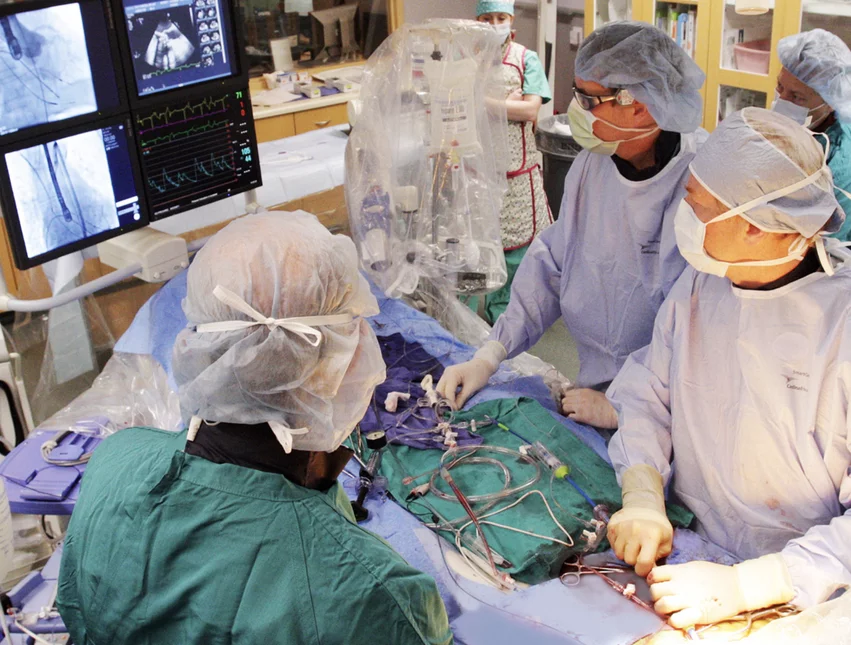AVR for moderate AS: New 10-year data highlight clear benefits of TAVR, surgery
Treating moderate aortic stenosis (AS) patients with transcatheter aortic valve replacement (TAVR) or surgical aortic valve replacement (SAVR) is associated with significantly better long-term outcomes than surveillance alone, according to new 10-year data published in Open Heart.[1]
“Aortic valve replacement (AVR) is recommended for patients with severe, symptomatic AS or when there is evidence of left ventricular systolic dysfunction,” wrote first author Essa Hariri, MD, MSc, a cardiology fellow with Johns Hopkins School of Medicine who was with Cleveland Clinic at the start of the study, and colleagues. “However, for patients with moderate AS, these indications are not well-established, with current guidelines recommending surveillance every one to two years with deferring AVR until AS becomes severe.”
Hariri et al. explored data from more than 1,400 patients who presented with moderate AS from 2008 to 2016. The mean patient age was 75.3 years old, 60.1% were men and the median follow-up period was six years. Patients were excluded if they presented with a bicuspid aortic valve or left ventricular ejection fraction (LVEF) lower than 20%. All data came from the Cleveland Clinic echocardiography database.
While 21% of patients were treated with AVR, the other 79% of patients were watched closely as recommended by current guidelines. Of the patients who underwent AVR, a majority (73.6%) were treated with AVR. All other patients were treated with TAVR.
By the end of the study, mortality was seen in 25.5% of patients, and 18.7% of those deaths were related to cardiovascular symptoms. The mortality rates were 6.8 per 1,000 person-years among patients in the clinical surveillance group and 2.4 per 1,000 person-years among patients in the AVR group. This also translated to a lower risk of all-cause mortality and cardiovascular mortality for patients in the AVR group after multivariable-adjusted regression analyses.
In addition, patients who specifically underwent TAVR for moderate AS were associated with a lower risk of all-cause mortality than patients in the surveillance group.
Hariri and colleagues also examined various AS parameters, noting that patients in the AVR group were linked to significant improvements in LVEF, left ventricular end-diastolic diameter, right ventricular systolic pressure and left ventricular mass index. There was no reduction in aortic valve area, the group added.
“To our knowledge, this is one of the largest studies to provide real-world data comparing outcomes between intervention for moderate AS and clinical surveillance,” the authors wrote. “The interest in investigating whether earlier intervention in patients with AS stems from multiple bodies of evidence indicating that moderate AS is associated with a poorer prognosis than previously thought compared with those with milder forms of AS or not AS, irrespective of LVEF.”
The researchers also emphasized that care teams will need to keep certain details in mind when considering AVR as a treatment strategy in patients who are not quite yet presenting with severe AS.
“In light of the potential need for future redo AVR when treating AS earlier in the disease course, it is crucial for operators to carefully evaluate root anatomy, type and size of surgical aortic valve replaced and the feasibility of future needed valve-in-valve TAVR prior to intervention,” they explained.
Click here to read the full analysis in Open Heart, an official journal of the British Cardiovascular Society.


